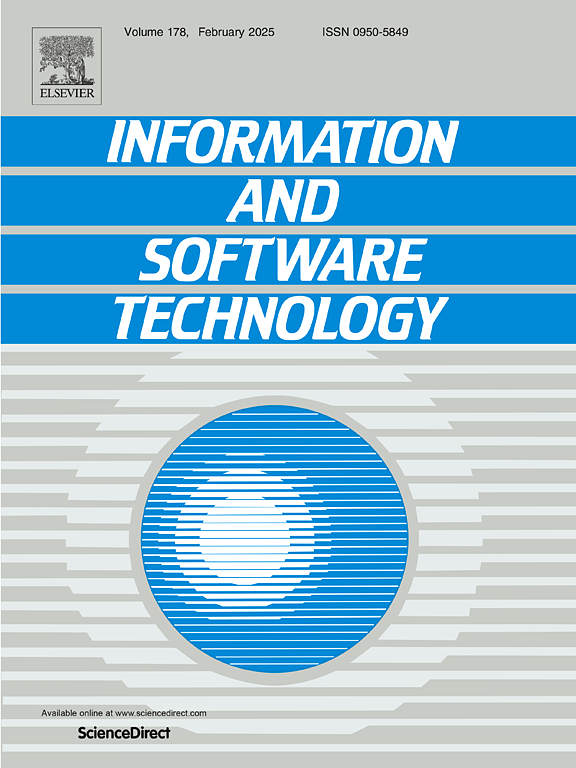Automated detection of inter-language design smells in multi-language deep learning frameworks
IF 3.8
2区 计算机科学
Q2 COMPUTER SCIENCE, INFORMATION SYSTEMS
引用次数: 0
Abstract
Context:
Nowadays, most deep learning frameworks (DLFs) use multilingual programming of Python and C/C++, facilitating the flexibility and performance of the DLF. However, inappropriate inter-language interaction may introduce design smells involving multiple programming languages (PLs), i.e., Inter-Language Design Smells (ILDS). Despite the negative impact of ILDS on multi-language DLFs, there is a lack of an automated approach for detecting ILDS in multi-language DLFs and a comprehensive understanding on ILDS in such DLFs.
Objective:
This work aims to automatically detect ILDS in multi-language DLFs written in the combination of Python and C/C++, and to obtain a comprehensive understanding on such ILDS in DLFs.
Methods:
We first developed an approach to automatically detecting ILDS in the multi-language DLFs written in the combination of Python and C/C++, including a number of ILDS and their detection rules defined based on inter-language communication mechanisms and code analysis. Then, we developed the CPsmell tool that implements detection rules for automatically detecting such ILDS, and manually validated the accuracy of the tool. Finally, we performed an empirical study to evaluate the ILDS in multi-language DLFs.
Results:
We proposed seven ILDS and achieved an accuracy of 98.17% in the manual validation of CPsmell in 5 popular multi-language DLFs. The study results revealed that among the 5 DLFs, TensorFlow, PyTorch, and PaddlePaddle exhibit relatively high prevalence of ILDS; each smelly file contains around 5 ILDS instances on average, with ILDS Long Lambda Function For Inter-language Binding and Unused Native Entity being relatively prominent; throughout the evolution process of the 5 DLFs, some ILDS were resolved to a certain extent, but the overall count of ILDS instances shows an upward trend.
Conclusions:
The automated detection of the proposed ILDS achieved a high accuracy, and the empirical study provides a comprehensive understanding on ILDS in the multi-language DLFs.
求助全文
约1分钟内获得全文
求助全文
来源期刊

Information and Software Technology
工程技术-计算机:软件工程
CiteScore
9.10
自引率
7.70%
发文量
164
审稿时长
9.6 weeks
期刊介绍:
Information and Software Technology is the international archival journal focusing on research and experience that contributes to the improvement of software development practices. The journal''s scope includes methods and techniques to better engineer software and manage its development. Articles submitted for review should have a clear component of software engineering or address ways to improve the engineering and management of software development. Areas covered by the journal include:
• Software management, quality and metrics,
• Software processes,
• Software architecture, modelling, specification, design and programming
• Functional and non-functional software requirements
• Software testing and verification & validation
• Empirical studies of all aspects of engineering and managing software development
Short Communications is a new section dedicated to short papers addressing new ideas, controversial opinions, "Negative" results and much more. Read the Guide for authors for more information.
The journal encourages and welcomes submissions of systematic literature studies (reviews and maps) within the scope of the journal. Information and Software Technology is the premiere outlet for systematic literature studies in software engineering.
 求助内容:
求助内容: 应助结果提醒方式:
应助结果提醒方式:


